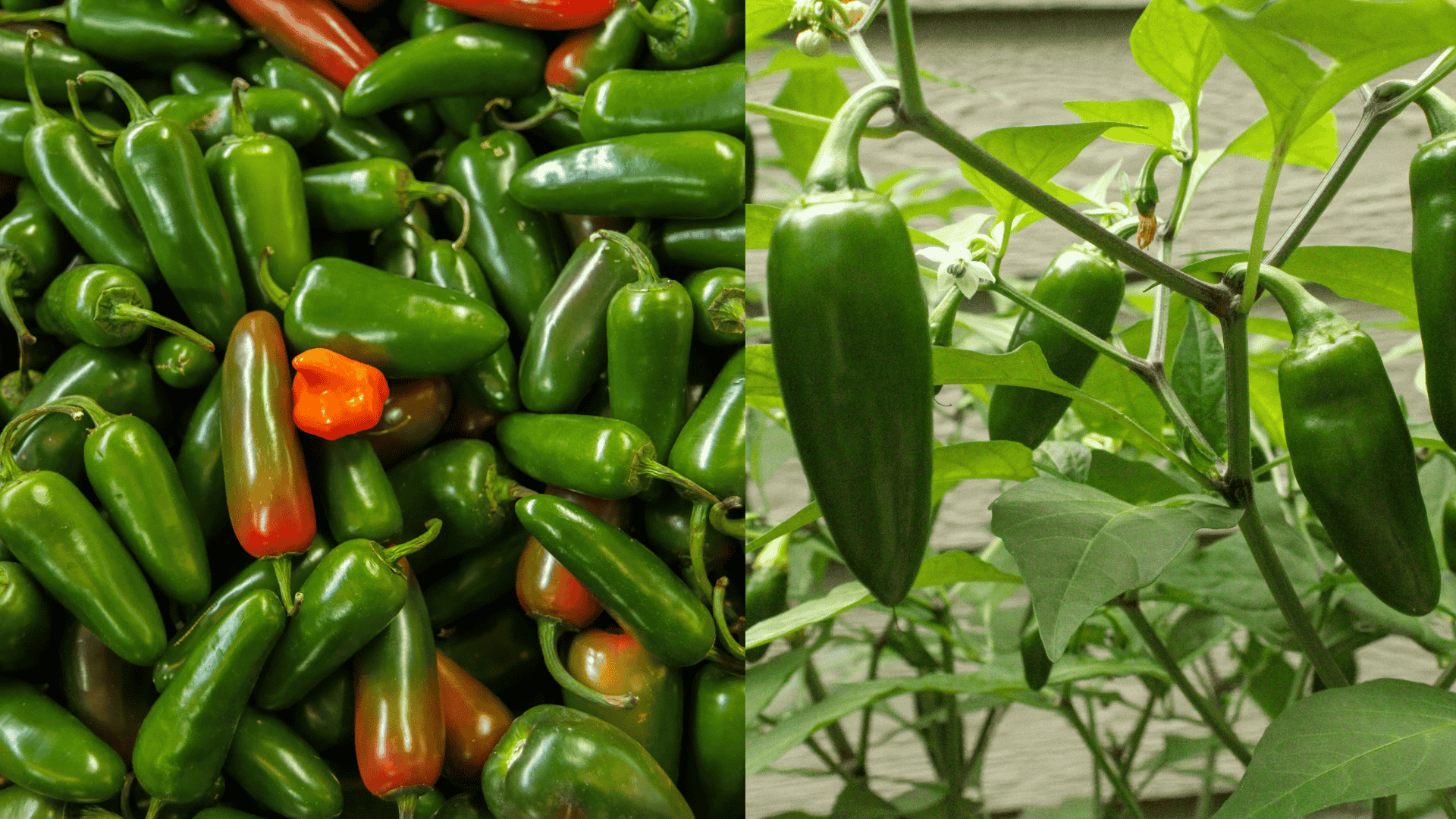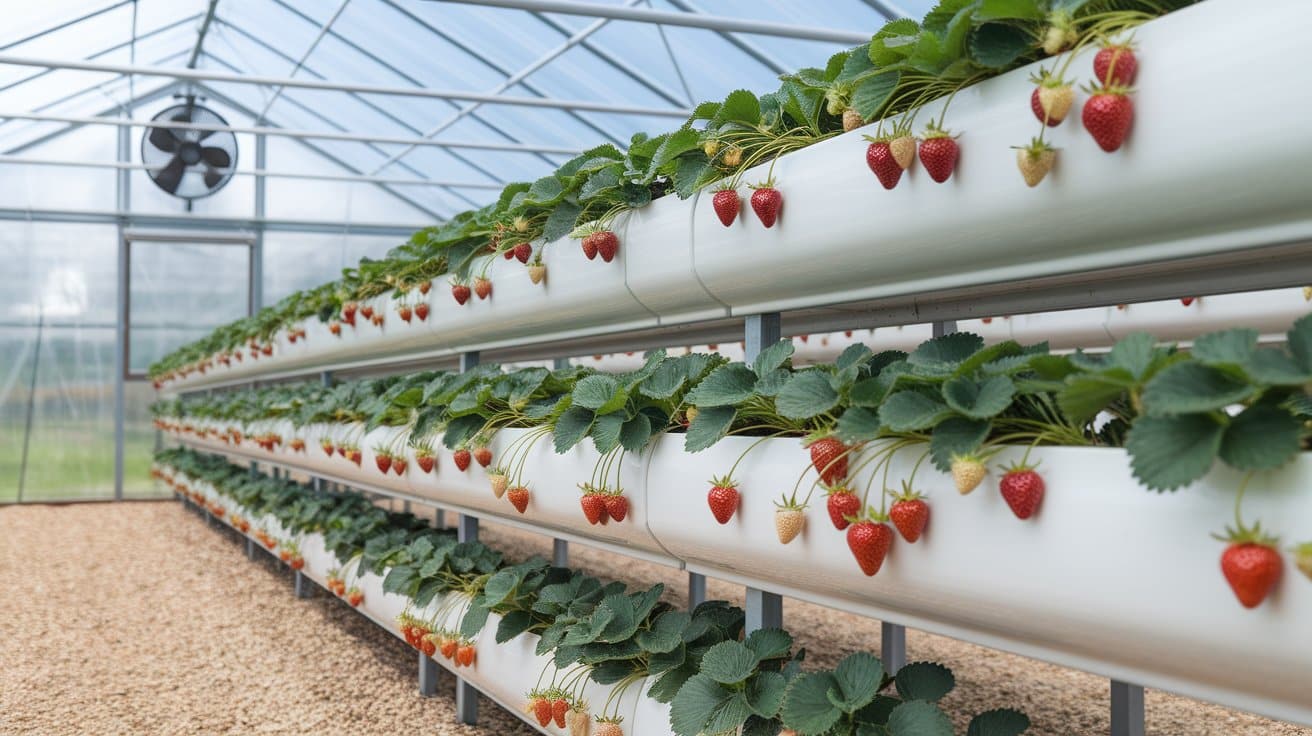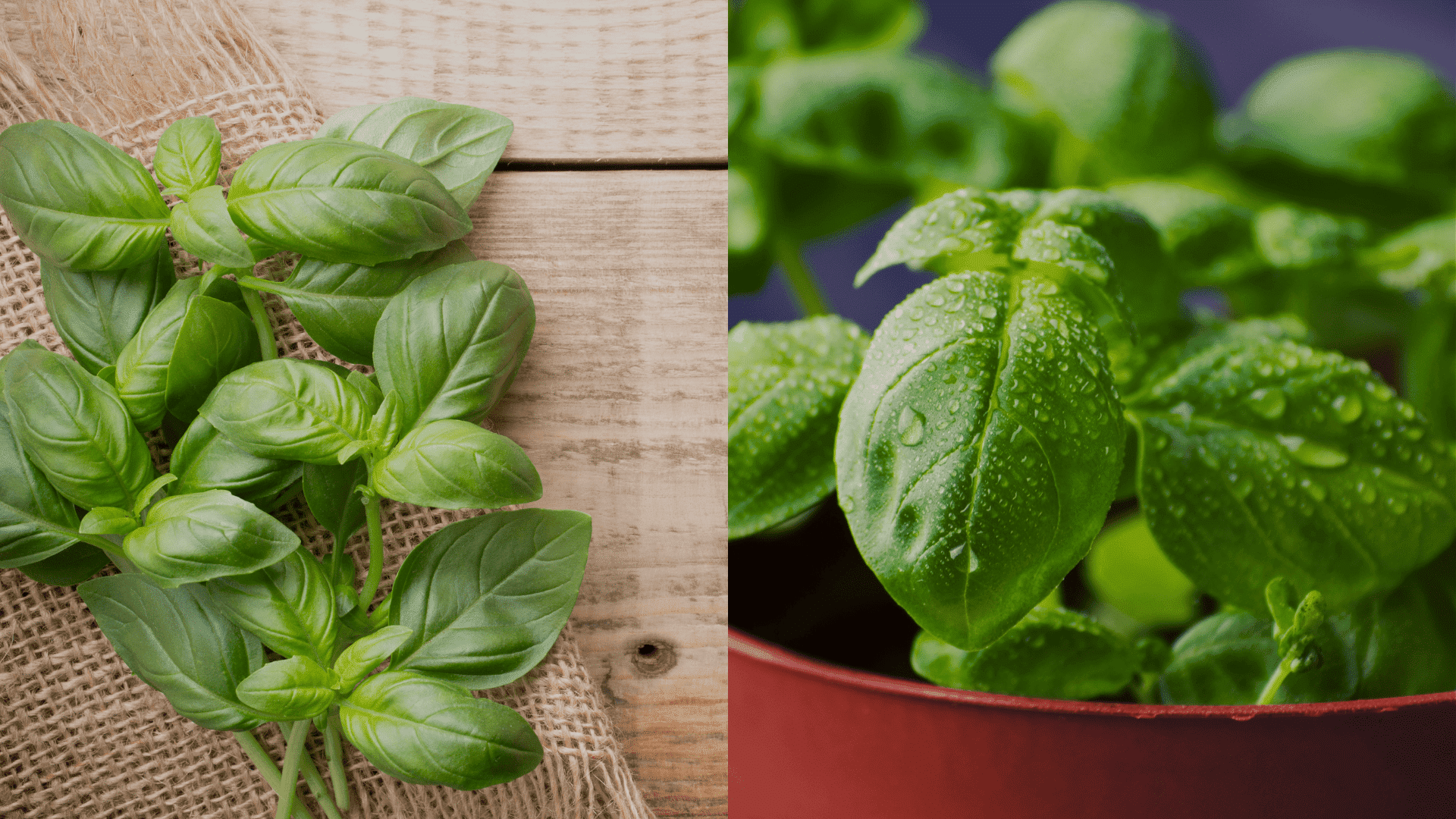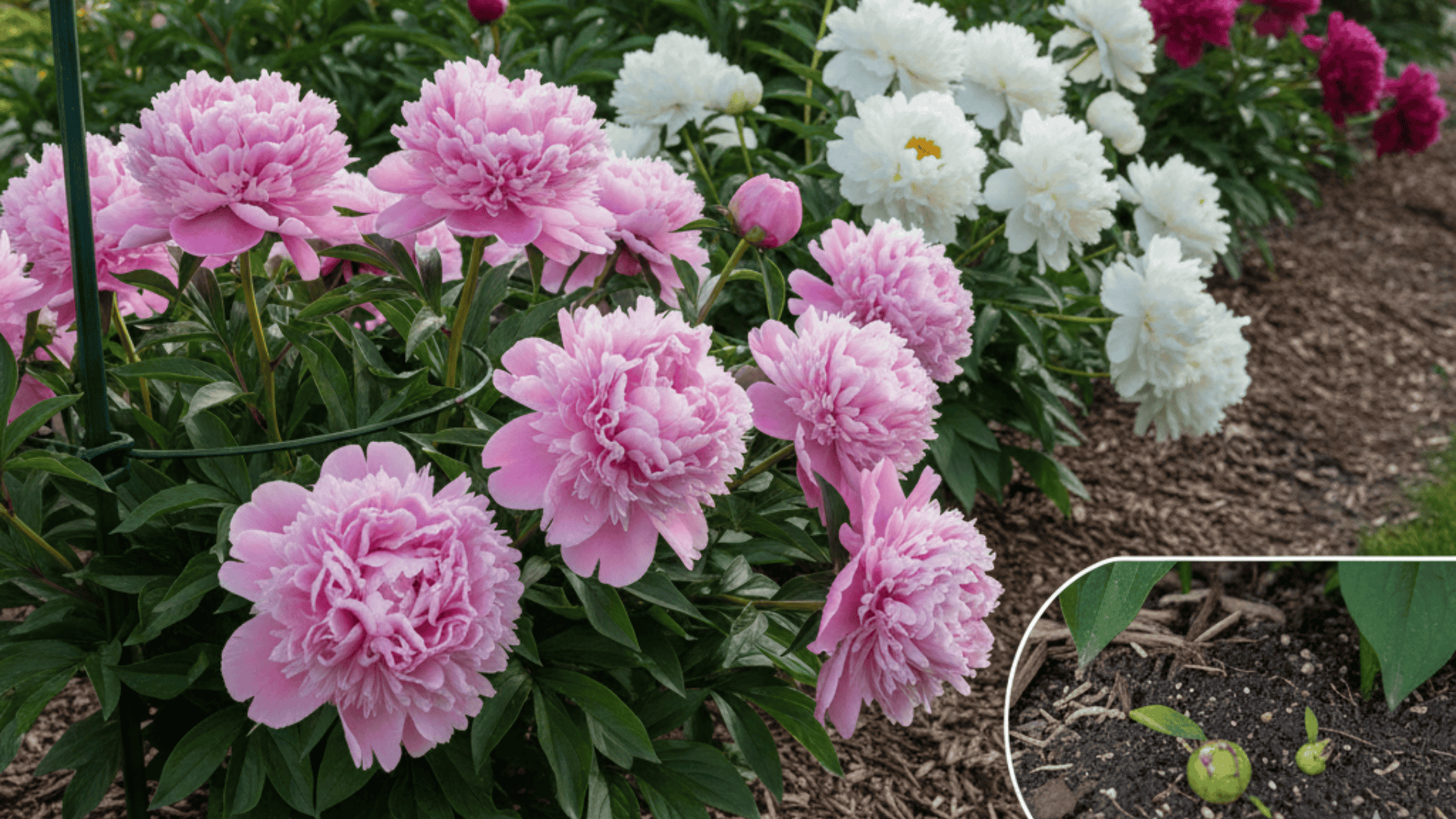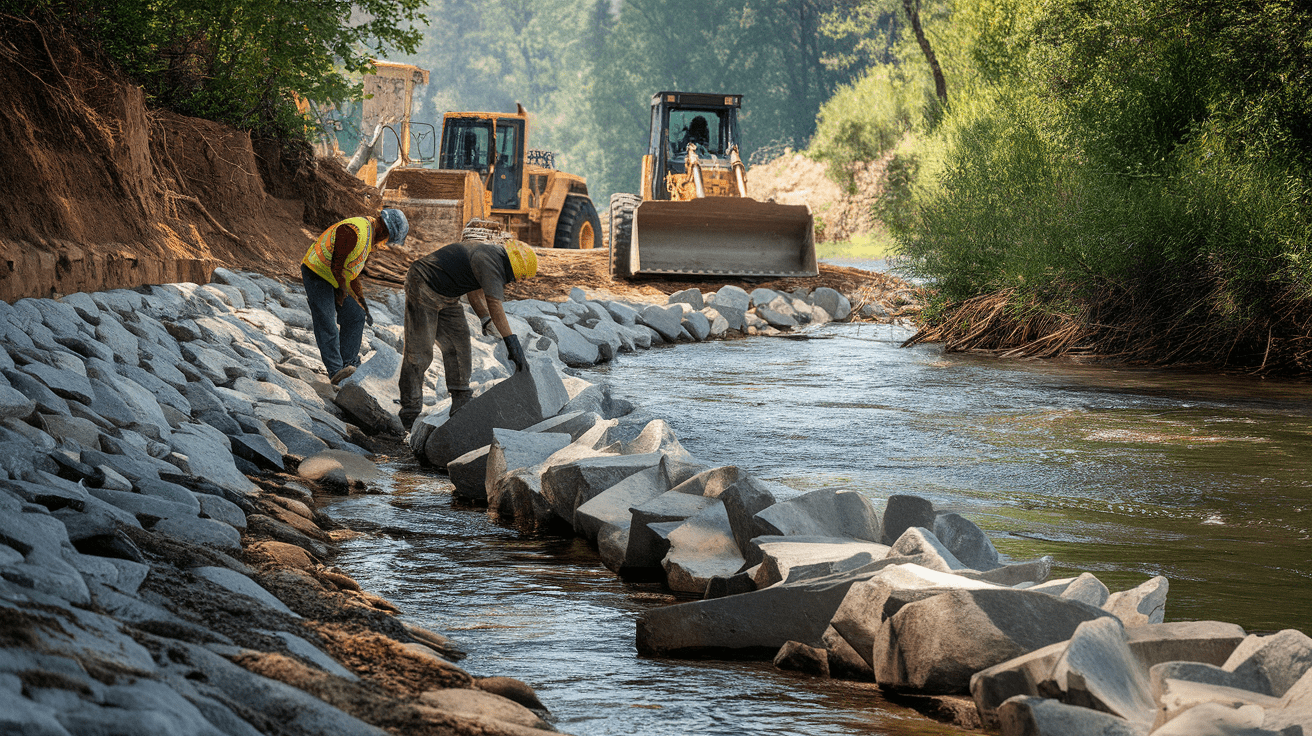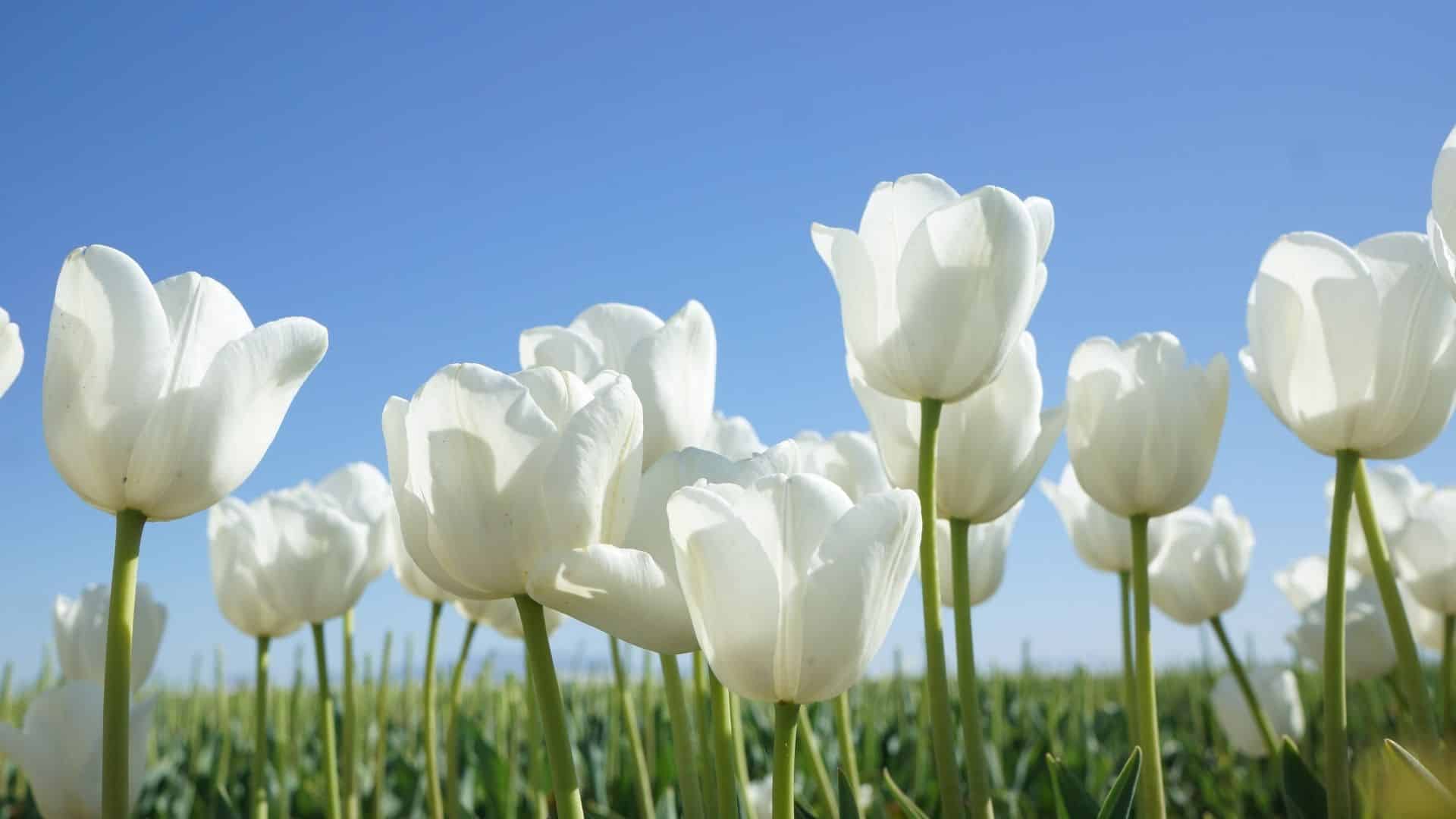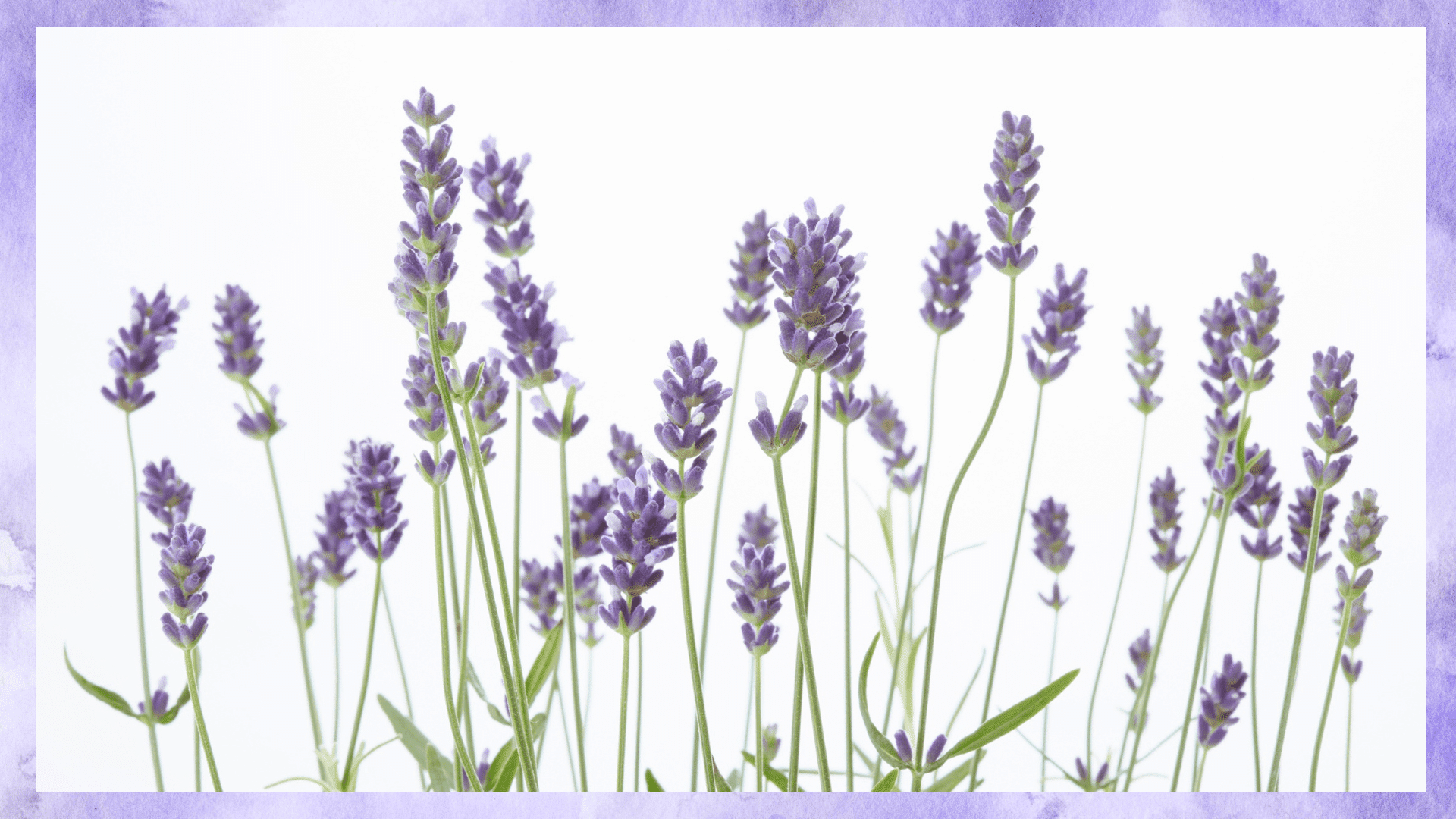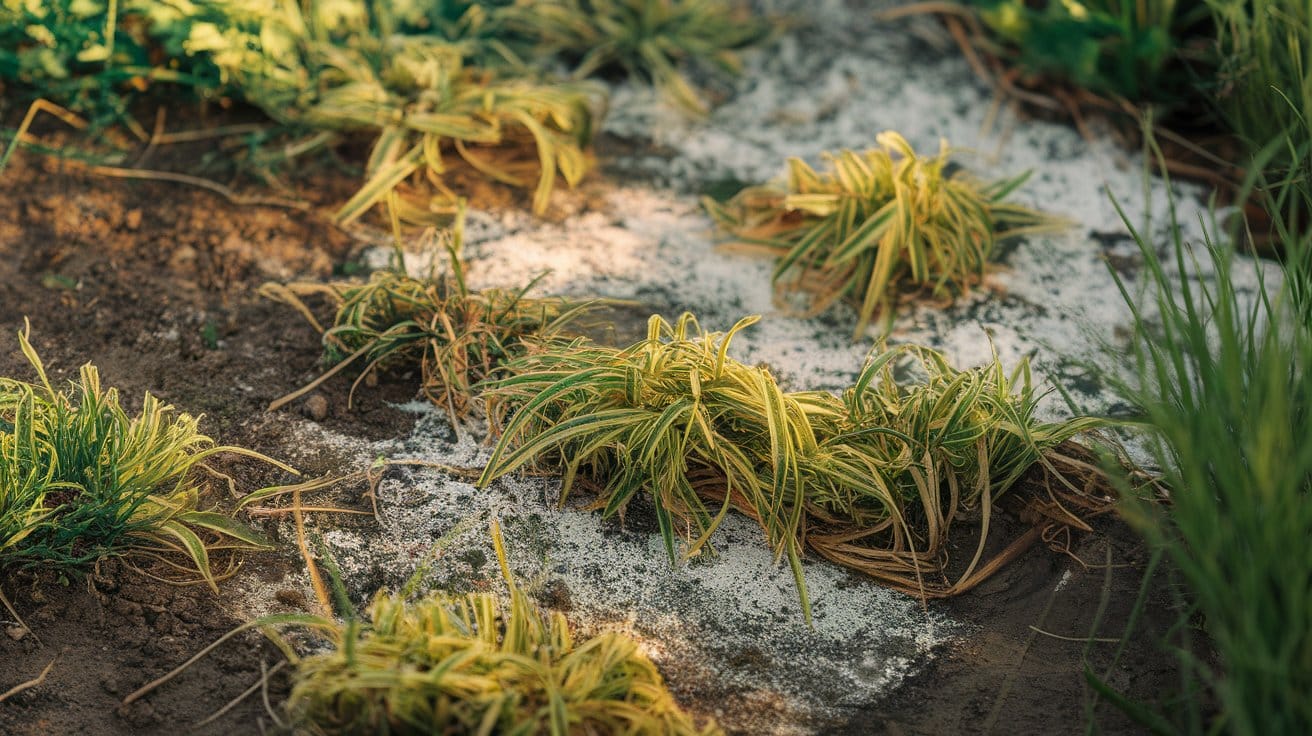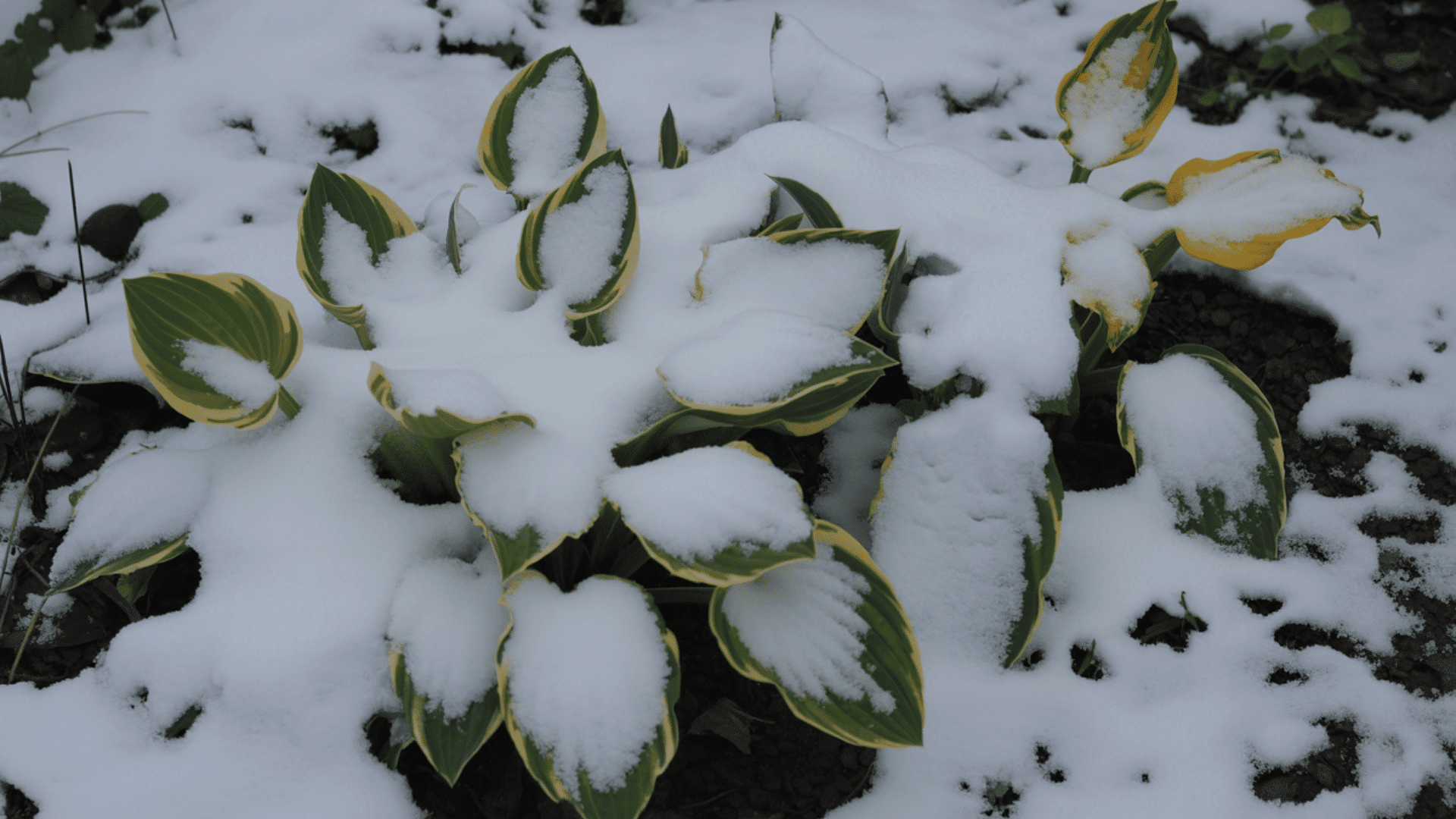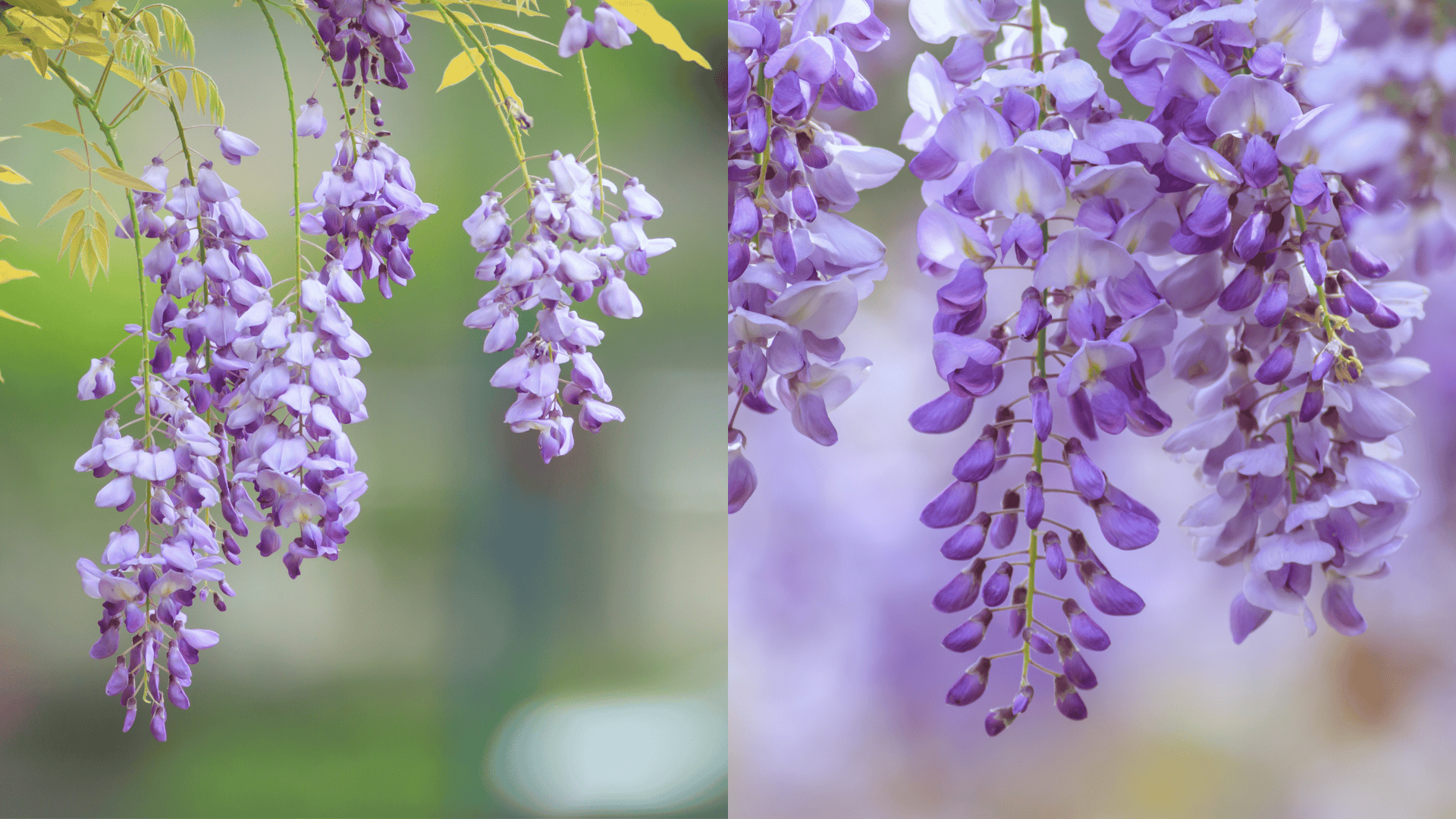There’s nothing quite like adding the bold, fresh heat of jalapeños you’ve grown yourself to your favorite dishes.
These vibrant peppers don’t just add flavor; they are also simple to grow with a little jalapeño plant care and the right conditions.
By learning how to grow jalapeños from seeds, you can enjoy healthy, productive plants even in small garden spaces or containers.
With proper watering, sunlight, and soil management, your efforts will yield crisp, flavorful peppers all season long.
Here, you’ll find clear steps from seed to harvest that show exactly how to grow jalapeños successfully.
About the Jalapeño Plant
The name “jalapeño” comes from “Jalapa,” the capital of Veracruz, Mexico, where these peppers were first grown.
The jalapeño plant is a warm-season pepper that grows best in full sunlight and well-draining soil.
It usually reaches about two to three feet tall and produces firm, glossy green peppers that can turn red when fully ripe.
Jalapeños prefer temperatures between 70 and 85 degrees Fahrenheit.
How to Grow Jalapeños?
Growing jalapeños takes patience, care, and attention to detail, but the process is simple once you know what each stage requires.
From planting seeds to caring for mature plants, every step plays an important role in helping your peppers grow healthy and produce a flavorful harvest.
Let’s look at each step in detail.
1. Growing Jalapeños from Seeds
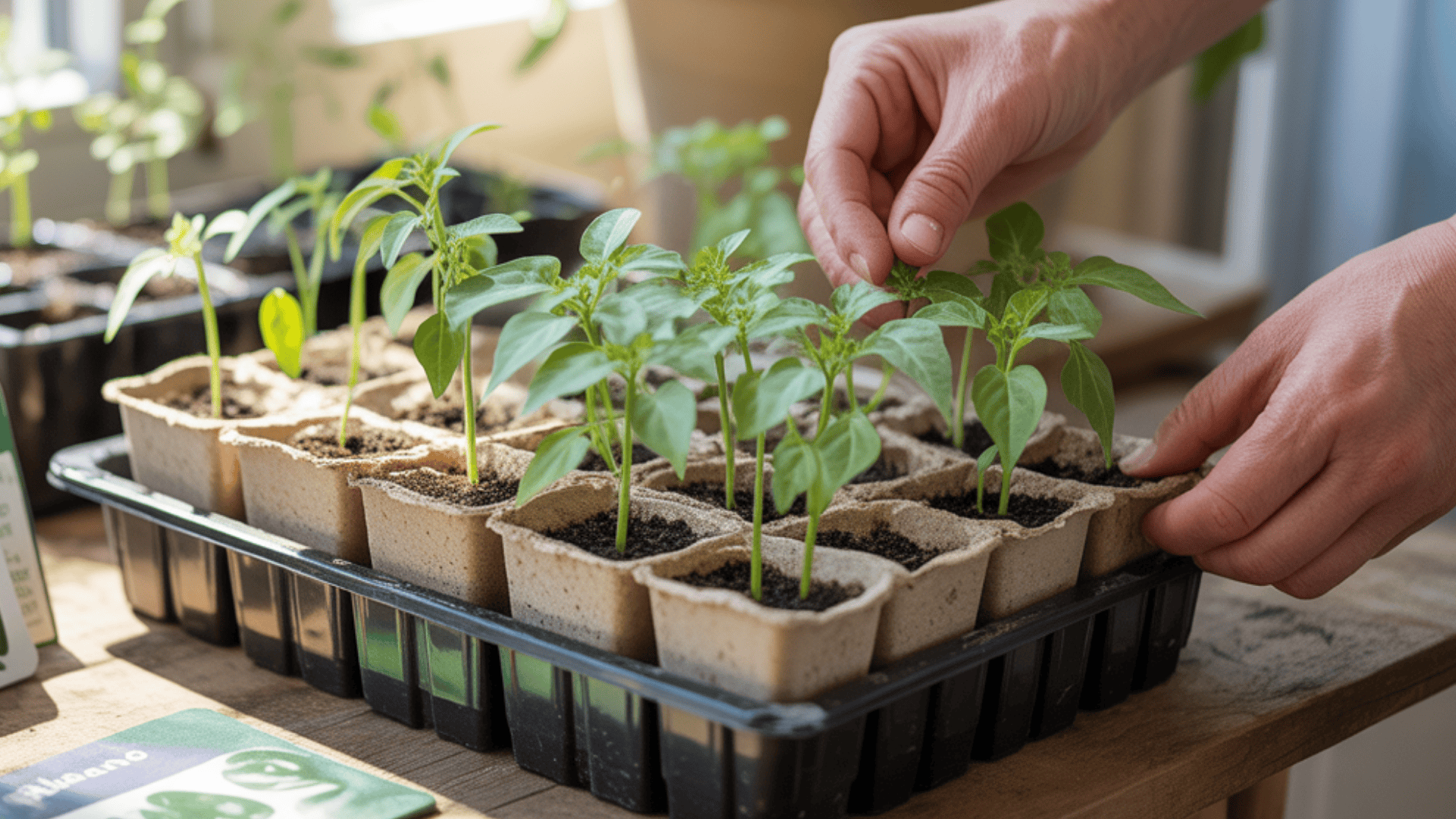
Starting jalapeños from seeds gives you full control over their growth and flavor.
Begin by planting the seeds indoors about 6-8 weeks before the last frost.
Use small pots or seed trays filled with light, well-draining soil, and plant each seed about a quarter-inch deep.
In 10–14 days, you’ll notice the first sprouts emerging.
Once your seedlings have two sets of true leaves, thin out the weaker plants and keep only the strongest ones.
2. Transplanting Jalapeños
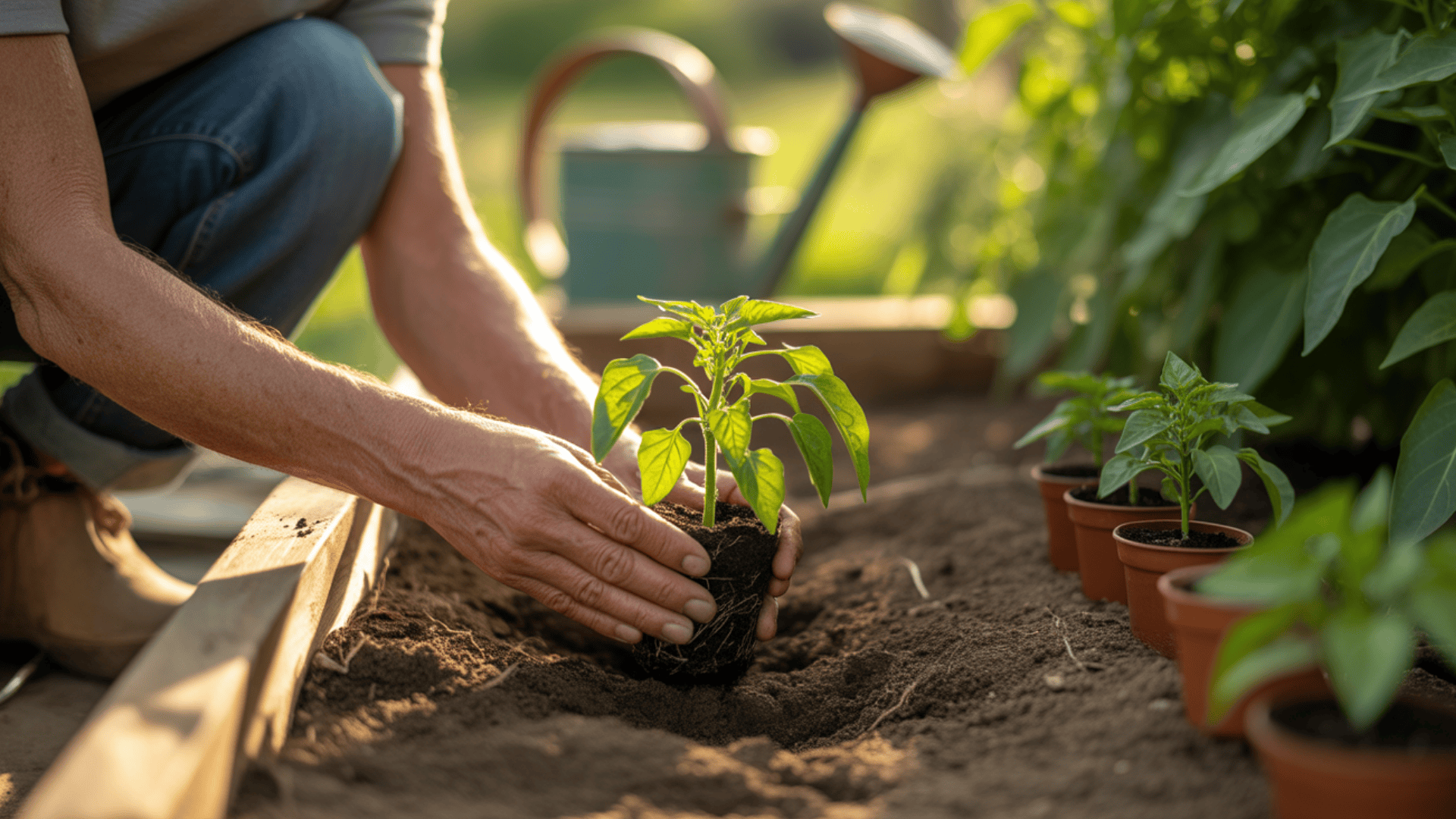
When your seedlings are about six inches tall and outdoor temperatures stay above 65°F, it’s time to move them outdoors.
- Hardening Off: Expose your seedlings to outdoor conditions gradually over a week.
- Planting Site: Choose a sunny location with rich, well-draining soil.
Gently remove each seedling from its container, keeping the root ball intact, and plant it at the same depth it was growing indoors.
Water thoroughly after transplanting to help the roots settle in.
3. Jalapeño Plant Care
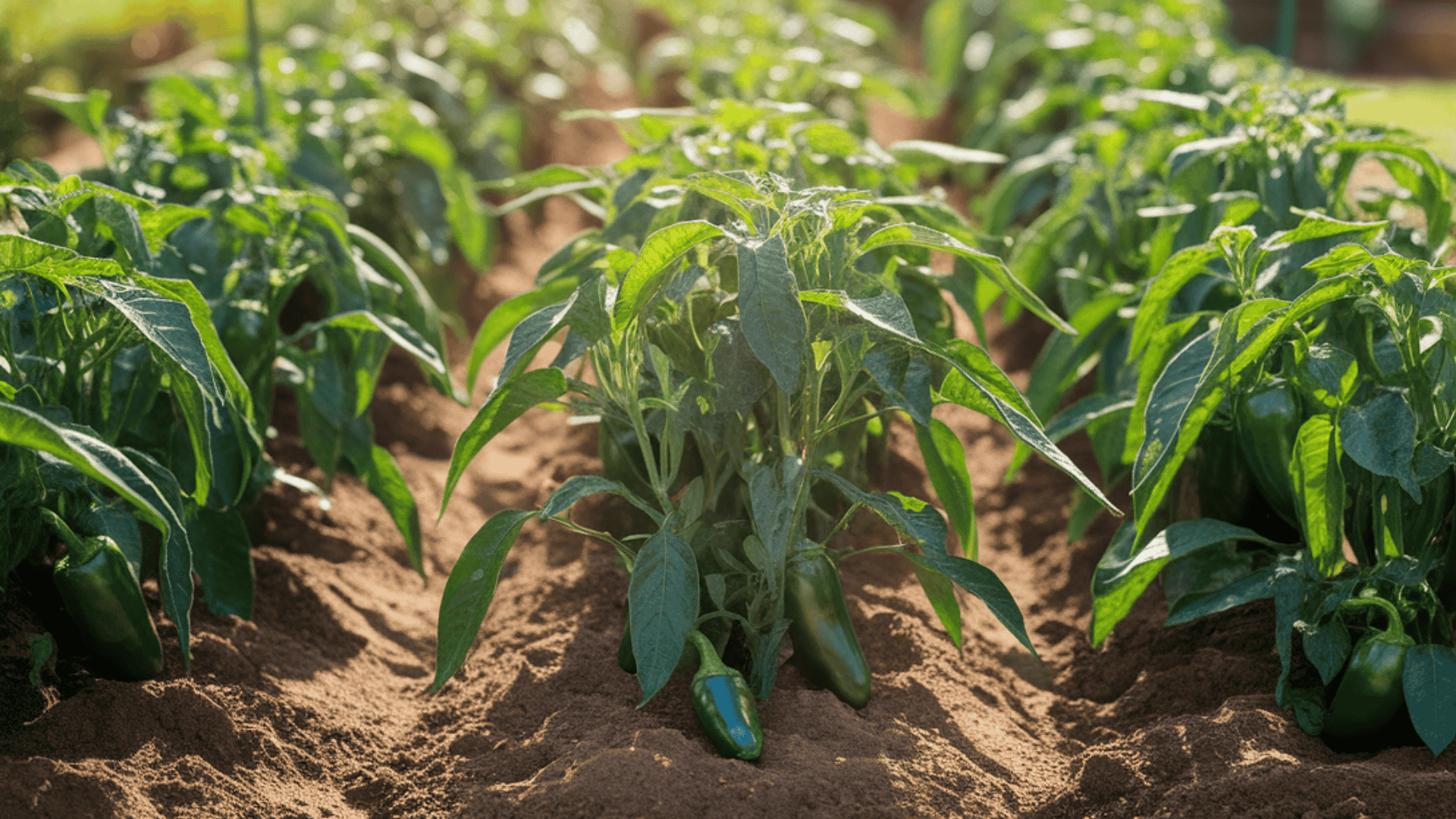
Once your plants are established, consistent care ensures steady growth and healthy fruiting.
Watering: Provide 1–2 inches of water per week, keeping the soil evenly moist.
Sunlight: Jalapeños love warmth and direct sunlight.
Fertilizing and Pruning: Feed your plants every 3–4 weeks with compost tea or a balanced fertilizer.
Support and Growth: As peppers grow heavier, use small stakes or cages to support the stems and prevent bending.
How to Grow Jalapeños in Pots?
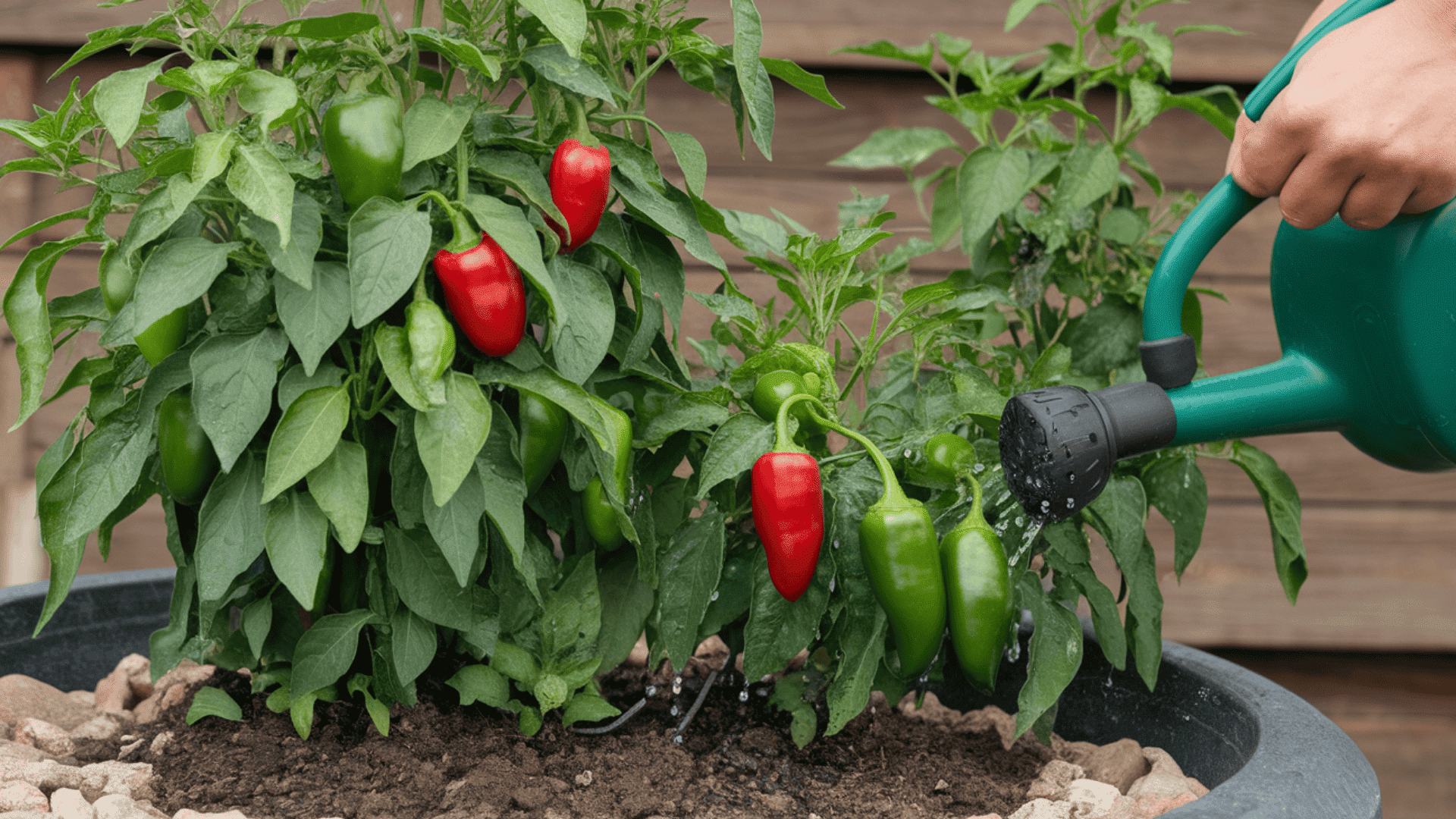
Cultivating jalapeños in containers works well for small spaces, patios, or balconies, and gives you flexibility to move plants as needed.
Pick the right pot, use good soil, and water often for the best results.
- Container Size: Use a pot that’s at least 5 gallons (12 inches wide and deep) with multiple drainage holes at the bottom.
- Soil Mix: Fill it with high-quality potting mix rather than garden soil, and add perlite for better drainage.
- Sunlight: Place your container where it gets 6–8 hours of direct sunlight daily.
- Watering: Container plants dry out faster than garden beds, so check soil moisture daily and water when the top inch feels dry.
Why Are Jalapeño Flowers Dropping Off the Plant?
Flower drop is a common issue when growing jalapeños and usually signals environmental stress.
High temperatures above 90°F or nighttime temperatures below 60°F can cause flowers to fall before setting fruit.
Inconsistent watering, low humidity, or lack of pollination also contribute to this problem.
How to avoid: Keep soil moist, provide shade during heat, and shake plants gently for pollination.
How to Harvest Jalapeño?
Harvesting jalapeños at the right time helps you enjoy the best flavor and texture.
Peppers are typically ready to pick 70 to 85 days after planting, once they reach a firm, glossy green color, about 2–4 inches long.
For a sweeter and slightly smoky taste, allow them to turn red before harvesting.
Use clean scissors or pruning shears to cut the stem about half an inch above the pepper.
After harvesting, rinse the peppers gently and pat them dry.
Problems, Pests, and Diseases: Jalapeno Plant Care
Even healthy jalapeño plants can face a few growing challenges. Here’s a simple table showing common issues and easy fixes.
| Issue | Signs to Watch For | Solutions |
|---|---|---|
| Yellow Leaves | Pale or discolored leaves | Reduce watering and add fertilizer. |
| Wilting | Drooping stems or leaves | Improve drainage and airflow. |
| Aphids | Tiny insects under leaves | Spray neem oil or soap. |
| Whiteflies | Small white bugs are flying around | Use sticky traps or spray. |
| Spider Mites | Fine webs on leaves | Rinse and mist plants often. |
Tips from the Growing Community
Experienced gardeners often share valuable advice that can make growing jalapeños easier than ever.
Here are some tried-and-tested tips from the growing community:
- Start seeds early indoors to give plants a strong head start before moving them outside.
- Water consistently to keep the soil evenly moist and prevent bitter-tasting peppers.
- Add mulch around the base to help retain moisture and regulate soil temperature.
- Fertilize lightly every few weeks for steady, healthy growth.
- Harvest peppers regularly to encourage continuous fruiting throughout the season.
Conclusion
Growing jalapeños is a fulfilling way to enjoy fresh, homegrown flavor while seeing the basics of pepper care.
Each stage, from seed planting to pest control and harvesting, plays a role in producing healthy, vibrant plants.
With consistent watering, sunlight, and attention, your garden can yield flavorful peppers season after season.
Knowing the art of growing jalapeños and its care gives you the confidence and cheerful experience to grow with ease and enjoy the results of your effort.
If you’ve grown jalapeños before or plan to start soon, share your experience or tips in the comments!
Frequently Asked Questions
Do Jalapeños Grow Better in Pots or in the Ground?
Jalapeños grow well in both, but pots offer better control of soil and drainage, while ground planting supports larger plants with higher yields.
Do Coffee Grounds Help Jalapeño Plants?
Yes, coffee grounds enrich the soil with nitrogen, improve drainage, and attract earthworms, helping jalapeño plants grow stronger when used in moderation.
Is Miracle-Gro Good for Jalapeno Plants?
Yes, Miracle-Gro provides balanced nutrients that support steady growth and fruiting, but it should be used sparingly to avoid over-fertilizing the plants.

